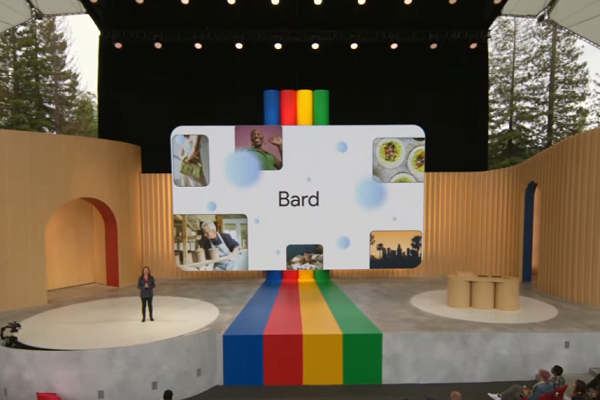Google Bard’s Global Vision for Generative AI at Google I/O

Google Bard sat at the center of this year’s Google I/O developer conference. The generative AI chatbot (and ChatGPT competitor) is exploding out of the closed preview it’s been in since February with a blaze of new and updated features. We briefly touched on some of them in our I/O roundup, but all of the news can be roughly categorized as either availability updates, new and improved features, or third-party plans. Here’s what the future holds for Google Bard.
Availability and Access
Google officially ended the Bard waitlist at I/O. The AI is now available to anyone with a Gmail account that isn’t linked to a business in 180 countries, excluding European Union nations. Presumably, that’s out of concern over GFPR and other privacy regulations under development in Europe despite Italy lifting its ChatGPT ban. Nonetheless, Bard picked Japanese and Korean as its first new languages, though another 40 or so are in this year’s pipeline.
Bard is also making more metaphorical moves and widening software access points. Google highlighted how Bard now runs through the PaLM 2 LLM yet didn’t mention its former LaMDA home, even in passing. Even PaLM 2 is just a waystation for Bard, which will eventually move eto the still developing Gemini LLM, a multimodal foundation model still under development. Meanwhile, Bard is now available in Google Workspace, enabling collaboration through different productivity products like documents, spreadsheets, and presentations. Anything done using Bard can be exported to Gmail, Docs, and Sheets, with the option to translate data into a spreadsheet table as well.
Features and Friends
Beyond under-the-hood improvements, Google showcased several new Bard features rolling out now or in the near future. Visuals to enhance the Exchanging images and visuals will be a particularly important aspect of upcoming Bard improvement. Google wants to give the AI the ability to incorporate photos and diagrams in its answers. The same goes for allowing users to include images in their submissions, possibly with the help of Google Lens, as a way of quickly giving context to results and getting to get captions for pictures. The possible visuals include maps, which is good since Bard will soon link with Google Maps and provide directions.
The connections to other apps aren’t limited to one built by Google, either. Like ChatGPT’s plug-ins, the upcoming Bard Extensions will bring third-party software and websites to conversations with Bard. Some of the same companies are doing both, in fact. A final, relatively small move, but one that got many cheers at the conference, is Bard’s new dark theme should a user prefer that.
“Since we rolled out Bard — initially in the U.S. and the U.K. — we’ve gotten quite a bit of feedback and have adapted quickly to make your experience with it even better. We recently moved Bard to PaLM 2, a far more capable large language model, which has enabled many of our recent improvements — including advanced math and reasoning skills and coding capabilities,” Google Assistant and Bard general manager and vice president Sissie Hsiao explained. “Looking ahead, we’ll introduce new ways to fuel your imagination and curiosity by integrating the capabilities of Google apps and services you may already use — Docs, Drive, Gmail, Maps and others — right into the Bard experience. Bard will also be able to tap into all kinds of services from across the web, with extensions from outside partners, to let you do things never before possible… We want Bard to be a home for your creativity, productivity and curiosity — so we’re working to connect Bard with helpful Google apps and many more partners, including Kayak, OpenTable, ZipRecruiter, Instacart, Wolfram and Khan Academy.”
Follow @voicebotaiFollow @erichschwartz
Google Teaches Generative AI Chatbot Bard to Write and Explain Software Code








